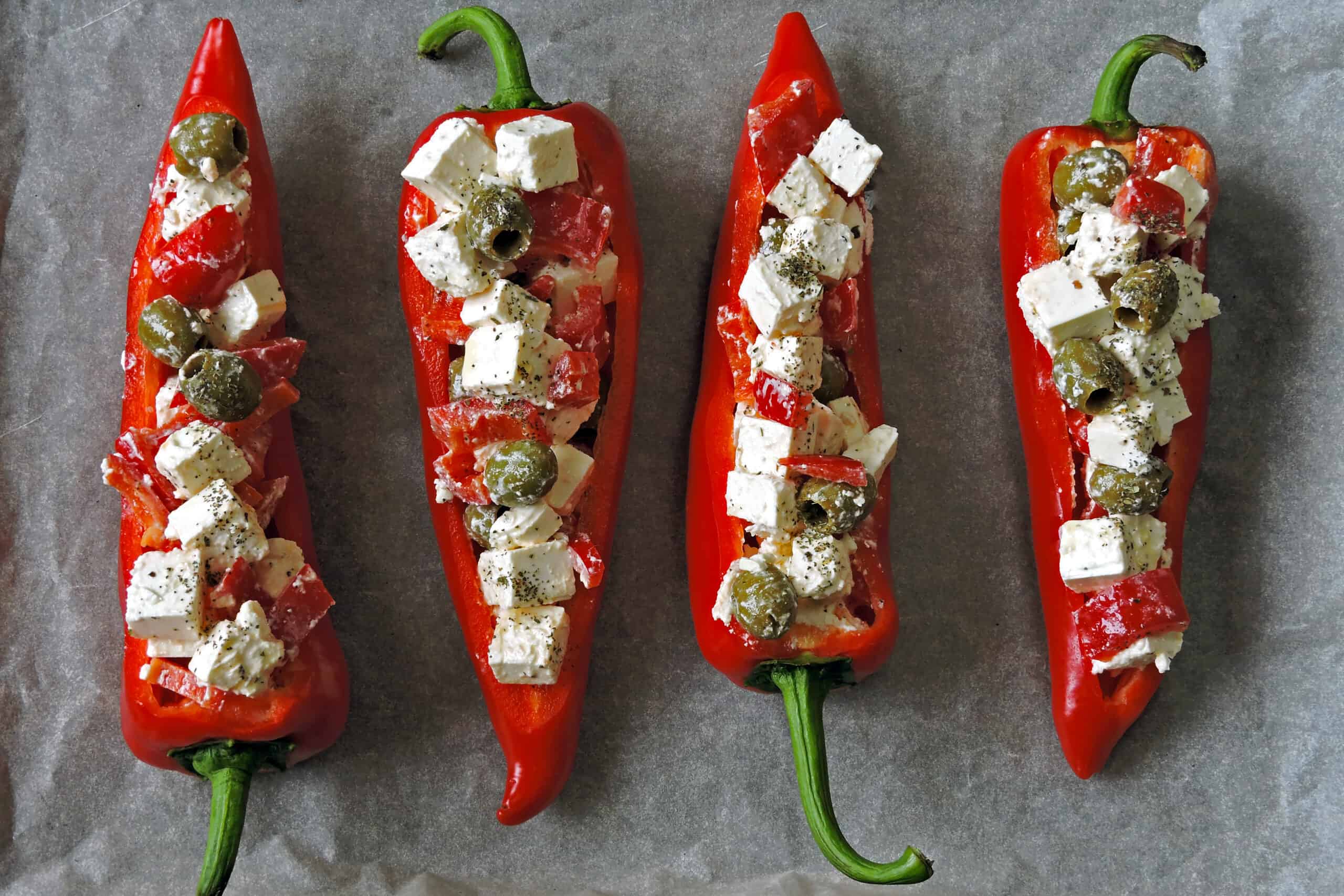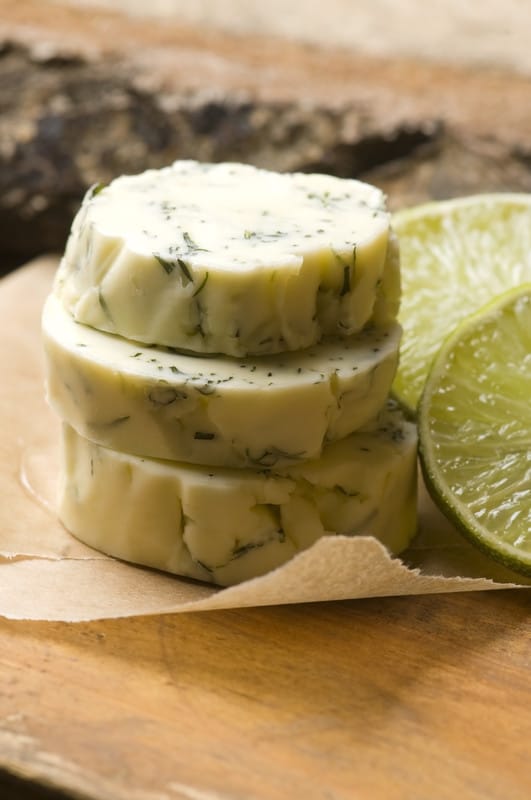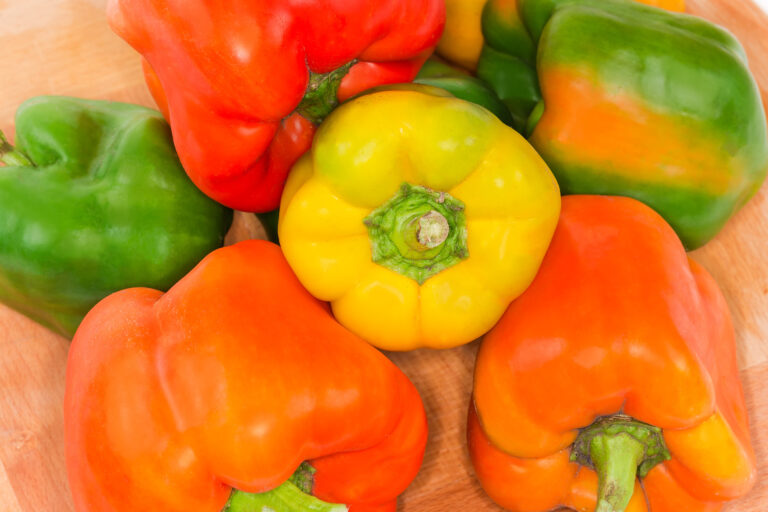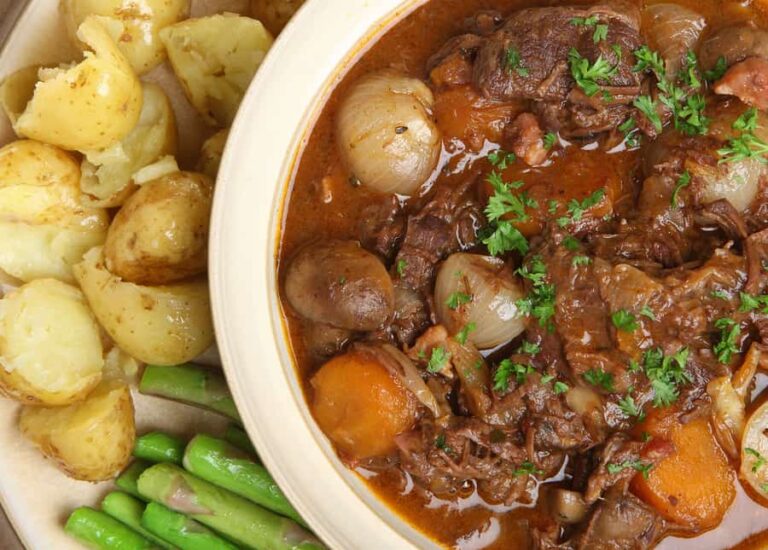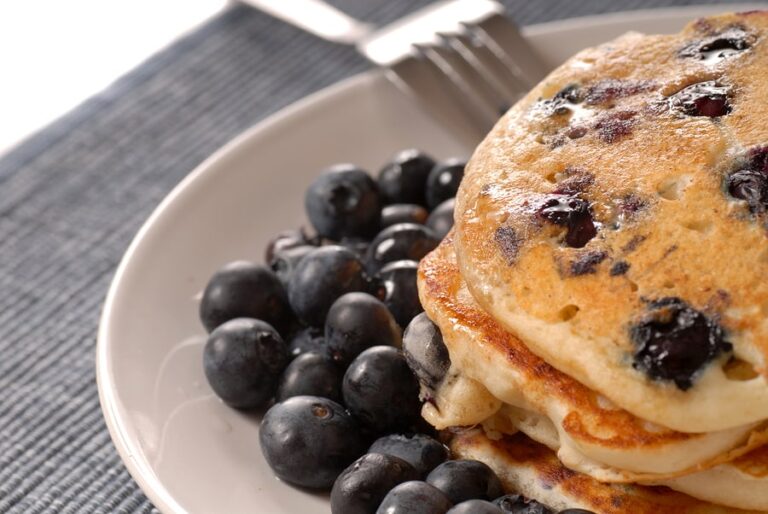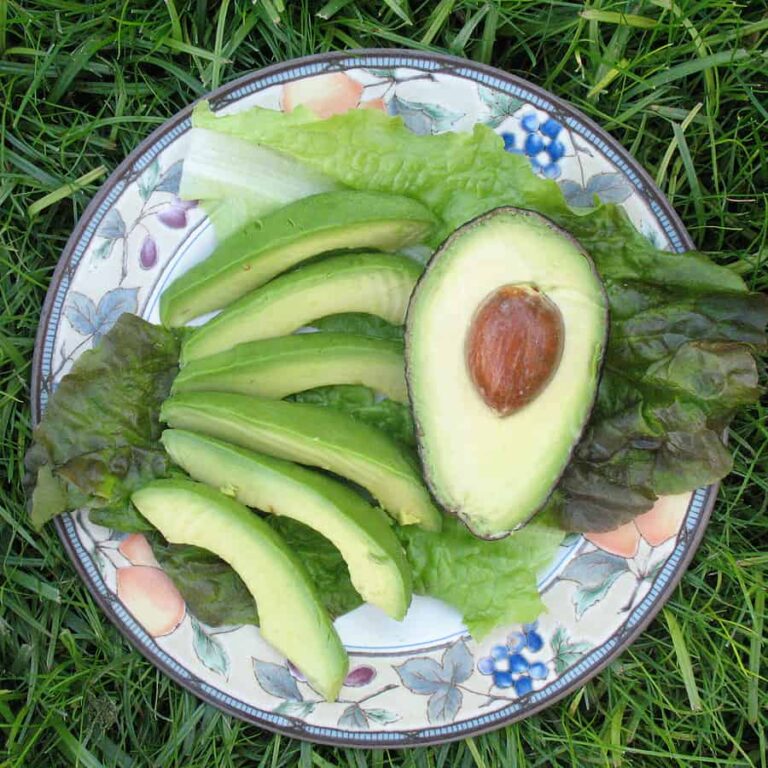Five Ways to Cook and Serve Chili Peppers
Chilies or hot peppers can be eaten raw or they can be roasted, grilled, pan-seared, toasted, or stuffed.
Chilies can also be added to other cooked dishes; they contain natural chemicals that enhance the flavor of other foods during cooking.
Often small, hot chilies—such as the jalapeño, Serrano, poblano, Anaheim, and banana–are used fresh. But they can also be chopped and then simmered or stir-fried with other foods.

Large chili peppers can be roasted or grilled whole or halved or stuffed. The longer a chili is cooked, the hotter the flavor.
Large hot peppers also can be dried and then used whole, ground, or crushed for blending with other foods. Dry-roasted chilies are the most intensely flavored. Several varieties of dried and ground chilies combined will add a complexity of flavors to prepared foods.
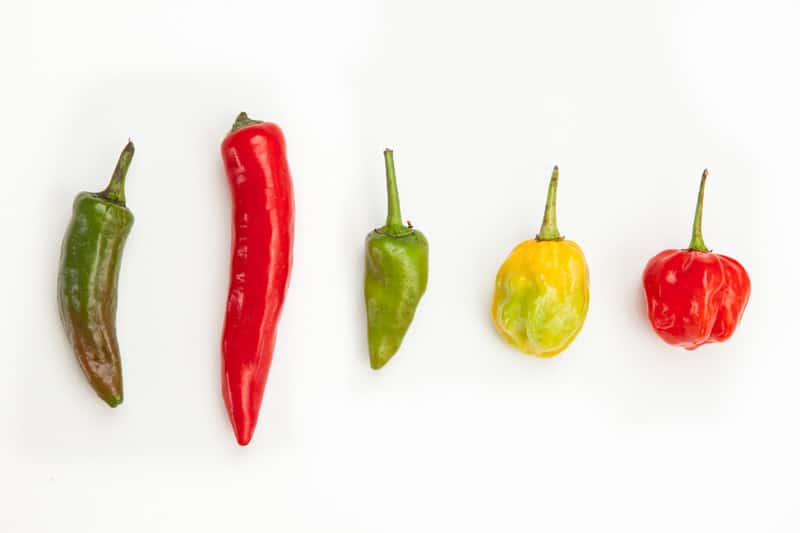
How to choose hot chili peppers
- There are more than 200 varieties of chilies. They range in size from just a quarter-inch (.6 mm) to more than 12 inches (30 cm) long. Chiles can be thin and long or plump and round. They can be green (like the jalapeño, Serrano, and poblano), yellow-brown, purple, or red (like the ancho, cascabel, cayenne, japone, hontak, and pasilla), or yellow (like the carribe and guero). Select hot peppers with deep vivid colors and smooth skins. A fresh pepper will be firm and shiny. Avoid peppers that are cracked, shriveled, or have soft spots.
- With so many fresh and dried chilies to choose from, here are some of the favorites: Anaheim, cascabel, guindilla, haranero, Hungarian wax, jalapeno, Jamaican hot, Korean, New Mexico, pepperoncini, rocoto, scotch bonnet, Serrano, and Thai.
- As a general rule, the larger the chile, the milder it is; small chilies are hot because proportionally they contain more seeds and veins than larger peppers. Chile seeds and veins contain about 80 percent of the chile’s capsaicin. Neither cooking nor freezing will diminish the intensity of a chile.
- Hot peppers should be allowed to ripen on the vine to reach full pungency. The ripening process of chili is similar to the tomato. The heat of chiles increases with the maturity of the fruit. Hot peppers usually come to harvest beginning in midsummer.
How to store hot chili peppers
- Store chilies unwashed and wrapped in a paper towel or in a perforated plastic bag in the vegetable compartment of the refrigerator for about 1 week. Peppers will sweat and deteriorate in whole plastic bags.
- Blanched or roasted and peeled chilies will store in the freezer for up to 6 months.
- Dried chilies (whether dried in a vegetable dehydrator, hung in garlands, or laid out loose in flats in the sun) whole or ground into powder will keep for up to 1 year. Store them in an airtight container in a cool, dark, dry place for up to 3 or 4 months.
- Pickled whole, cooked, and canned, hot peppers will keep for up to 2 years.
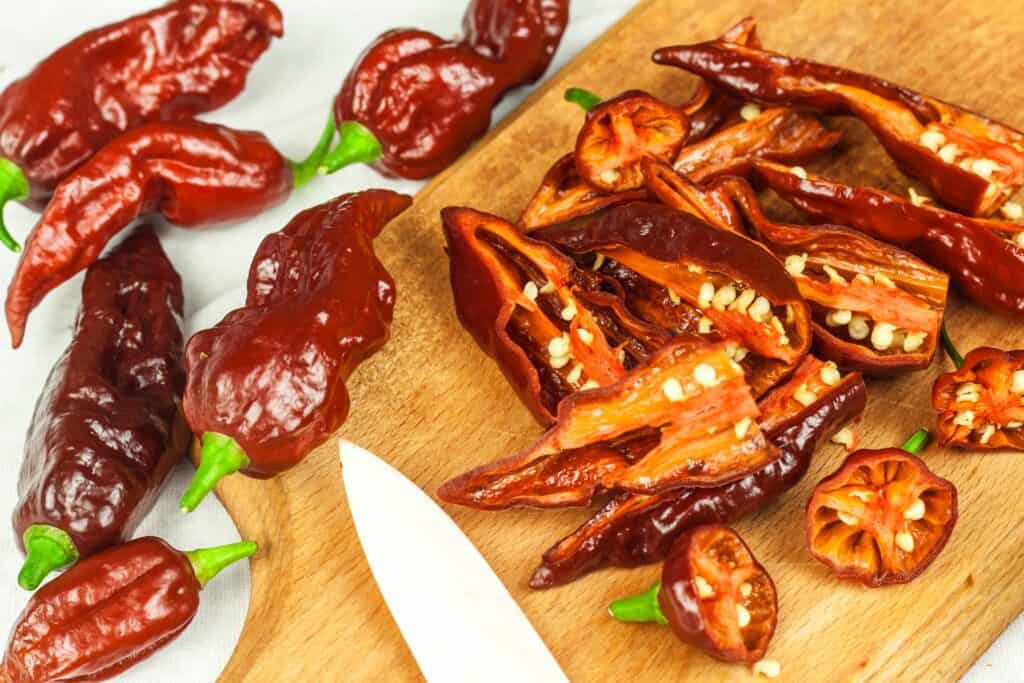
How to prep hot chili peppers
- Prepare chile peppers by rubbing them gently under cold running water; pull out the stems; break or cut the pods in half lengthwise and brush out seeds. If the ribs are soft cut them out. The seeds and ribs contain capsaicin, an irritant. Soaking chile peppers in salted water for an hour or so before using may mellow their flavor.
- Most chilies have thick skins that should be removed before cooking. The skin of chili can be removed by charring, roasting, frying, or sweating. Be careful not to burn chilies when cooking; the fumes can irritate the eyes and nose.
- Always use caution in handling hot peppers. Capsaicin in the skin and seeds of hot peppers will irritate the skin, mouth, and eyes. Wear latex or rubber gloves when handling hot peppers and always wash your hands well after handling peppers.
- Be careful when removing the lid of a container containing hot peppers; escaping fumes can irritate eyes, skin, and respiratory passages.
Hot chili pepper serving suggestions
- Fresh chili peppers can be baked, roasted, grilled, stuffed, or eaten raw. Dried and ground chile can be added to salsas and chutneys. Pickle chilies for use in salsas.
- Chilies are used in chili con carne, curries, and hotpots. Chop and add chili to spaghetti.
- Cayenne pepper is a dried and ground powder made from chilies. It is the ingredient in Tabasco sauce. Dried red chilies can be ground in a pepper mill or with a mortar and pestle.
- Hot peppers are often charred and peeled before use.
Hot chili pepper cooking suggestions
- Peppers boost the taste of other ingredients. Fresh chilies combine well with fresh tomato-based sauces, onions, avocadoes, beans and lentils, mild cheeses, sausages, meat stews and sautés, corn, poultry, fish, and shellfish. Dried chiles are added to curry powder, chili powder, cayenne, and pizza pepper.
- When it comes to cooking, it is best to use caution when adding chili peppers to a dish. Cooking intensifies the hotness of chili. It’s best to start with a little chili and taste your way forward.
- A good way to add chile flavor to a dish is to sauté the hot pepper in oil and then use the oil for cooking. (Peppers slow the oxidation of cooking oils, so hot pepper oil will not go bad as quickly as plain oil.)
- When peppers are cooked in vegetable oils, the capsaicin breaks down into vanillin, a synthetic flavoring very close to the natural flavoring of vanilla beans. Vanillin—like natural vanilla–adds its own special flavor to other foods.
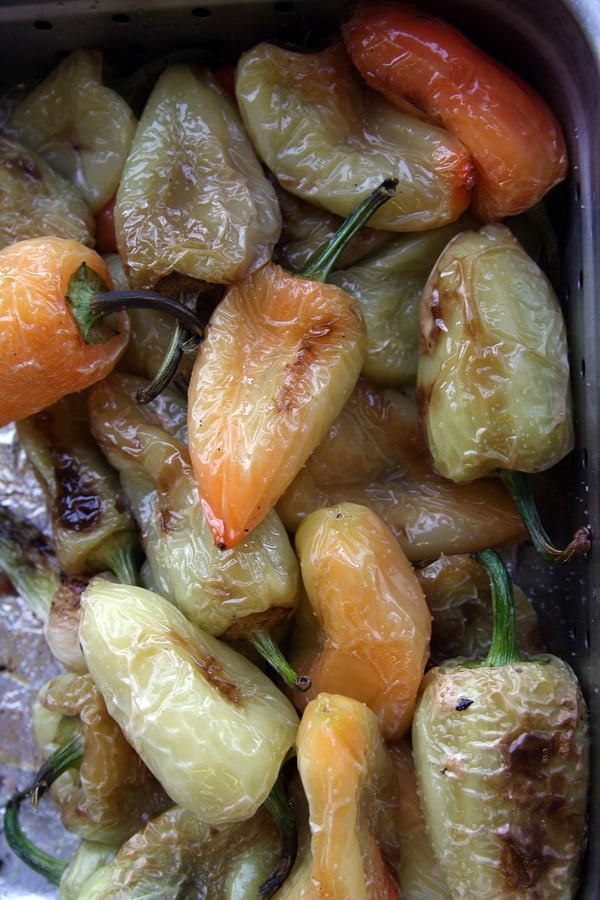
How to roast chili peppers
- Brush the peppers with a light coat of vegetable oil.
- Place the peppers on a broiler in the oven.
- Turn the peppers as they broil to brown them evenly, about 5 to 8 minutes.
- When they are charred, place the peppers inside either a plastic resealable or brown paper bag for 15 minutes before peeling off the outer charred layer.
- Cut up the peppers as desired based on how you plan to use them.
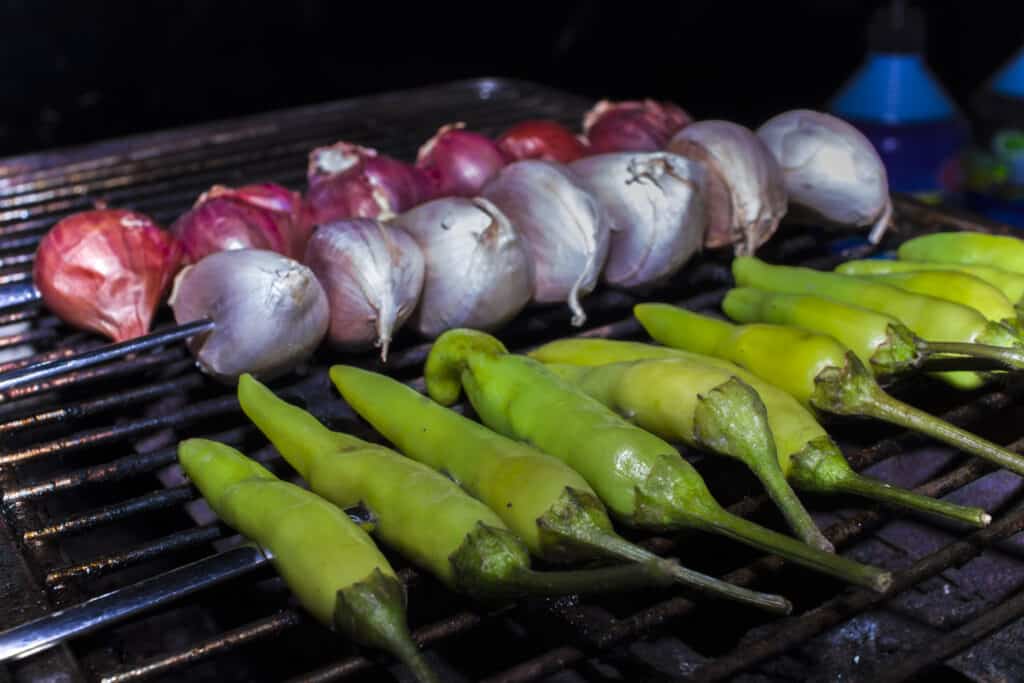
How to grill chili peppers
- Grill whole peppers or pepper pieces. To keep smaller pieces from falling through the grates, place them on a skewer before grilling.
- Brush the peppers with a light coating of olive oil and season.
- Place the peppers on the grill.
- Turn until they are evenly brown or charred, about 5 to 8 minutes.
- Place the peppers inside either a plastic resealable or brown paper bag for 15 minutes before peeling off the outer charred layer.
- Cut up the peppers as desired based on how you plan to use them.
How to Pan-Sear Chili Peppers
- In a large a heavy skillet, heat vegetable oil over medium-high.
- When the oil is hot, add the chiles; work in batches if necessary.
- Cook, turning occasionally, until browned and blistered on all sides, about 10 minutes.
- Season with salt and serve.
How to Toast Chili Peppers
- Heat an ungreased griddle or heavy skillet over medium heat.
- Place whole or cut chili peppers on the griddle in a single layer.
- Cook for 1 to 3 minutes until the chilies become just fragrant; press down with a spatula and turn occasionally.
- After the chilies have cooled you can cut them open and remove the seeds and veins; wear rubber gloves.
You can also toast chilis in an oven at 350 degrees F.
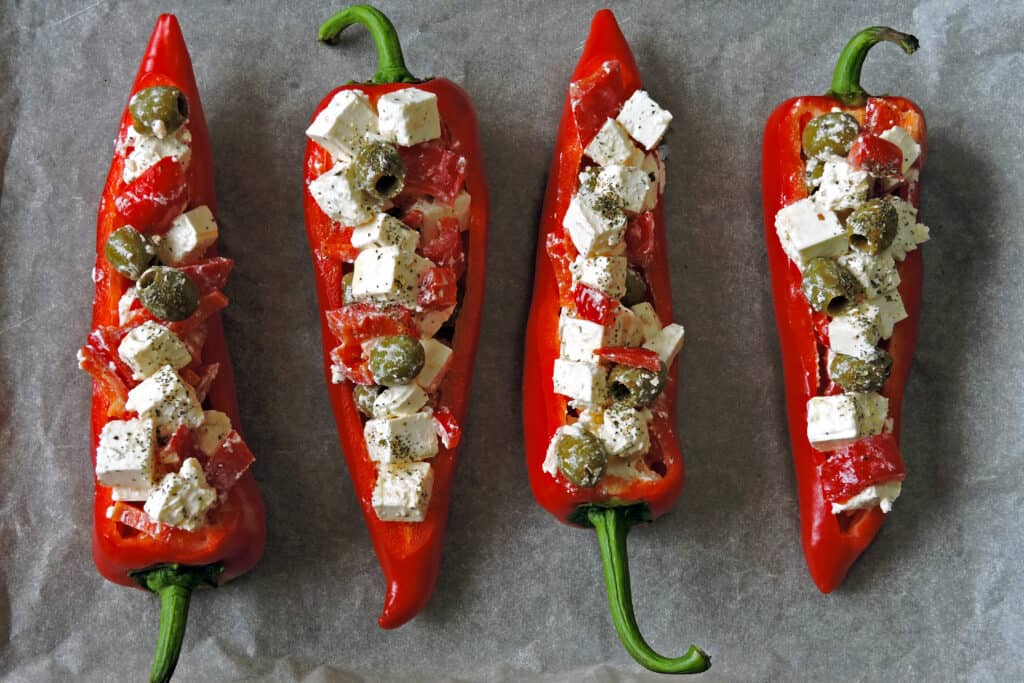
How to stuff chili peppers
- Preheat the oven to 375 degrees F.
- Halve the peppers lengthwise and remove the seeds and membranes.
- Blanch the peppers in boiling water for 3 to 4 minutes.
- Pat the peppers dry.
- Stuff the peppers with rice, corn kernels, fish, sausage, or vegetables.
- Arrange in a baking dish, add 1 cup of stock, and bake for about 25 to 30 minutes.
- Serve hot.
Hot chili pepper flavor partners
- Chilies have a flavor affinity for commonly used Latin American foods such as cilantro, lime, mole sauce, pinto beans, pumpkin seeds, tomatillo sauce, and tomatoes, and for commonly used Asian foods such as coconut milk, fermented black beans, fish, sauce, ginger, kaffir lime, peanuts, sesame oil, and soy sauce.
- Chilies combine well with other herbs and spices such as cilantro, basil, ginger, oregano, cinnamon, black pepper, cumin, fennel, and flat-leaf parsley.
Hot chili pepper heat ratings
- Hot peppers range in pungency from the mildly spicy pepperoncini to the blazingly hot habanero. Human tolerance for the “hotness” of a chili pepper was once measured by simple taste tests; now it is measured by what is called the Scoville scale.
- Scoville heat units indicate the degree of capsaicin present in a pepper. Capsaicin is a chemical compound that stimulates the thermoreceptor nerve endings in the skin and mucous membranes. The number of Scoville heat units (SU) indicates the amount of capsaicin present in a pepper.
- To put pepper pungency in perspective, a sweet bell pepper has a 0 Scoville rating while a pimento or pepperoncini pepper has a rating of 100 to 500. A jalapeño pepper has a rating of 2,500 to 8,000 Scoville heat units and a cayenne pepper has 30,000 to 50,000. The habanero pepper has a rating of 100,000 to 350,000 heat units. If you put just a tiny bit of one of these peppers in your mouth, you will get the idea.
Hot chili pepper handling caution
- Capsaicin is an oily, alkaloid-like substance that clings to the outer skin, juice, and seeds of fresh and dried hot peppers. It is a skin and eye irritant. Use disposable rubber gloves when handling peppers to prevent burns to the skin. Do not rub your face with your hands after handling peppers or their plants. Use milk to wash a hot pepper’s sting from the skin.
- Avoid touching your face—especially your lips or eyes—after handling fresh or dried hot peppers. The capsaicin in the pepper will burn you. Wash your hands, the knife, and the cutting surface with soap and hot water to eliminate capsaicin left over after the preparation of chiles. If your skin is sensitive, wear latex or rubber gloves.
- To make sure you don’t regret eating a hot pepper later, avoid the seeds and the whitish inner ribs; that’s where the most capsaicin is. Soaking chilies in cold water with a little vinegar about an hour before eating may also help.
- Too strong chili can cause intestinal burning: rice, beans, and bread are good antidotes. The fat content of yogurt and milk with soothe the tongue and mouth of a chili burn. Water will intensify the burning effect of hot peppers.
- All of this said, enjoy hot peppers for the zest they add to cooking. The heat of an eaten chile can actually be cooling in hot climates. In Mexican cooking, raw hot peppers are often used in savory dishes and in the Hunan and Szechuan regions of China, chilies are used every day in stir-fries, dipping sauces, and soups.
Hot pepper nutrition
- Hot peppers contain the daily quota of vitamins A and C.
Canning peppers
Beginner’s Guide to Canning Peppers

Get to know hot chili peppers
- The hot, spicy flavor of chilies was once characteristic of Mexican, West Indian, and South American dishes. Hot peppers were one of the first plants cultivated in the Valley of Mexico in North America nearly 9,000 years ago. The name chili was the word used for pepper in the Nahuatl language of the region.
- Christopher Columbus introduced chilies to Spain and Europe in the late fifteenth century, and shortly after the Portuguese navigator Ferdinand Magellan introduced them to Africa and Asia.
- Today chilies grow as perennial plants in tropical regions around the world and grow as annuals in much of the cooler temperate world. Beyond Mexico, South America, and the Caribbean, chile peppers are now commonly used in the cookery of many African countries, the Szechuan region of China, India, Spain, and Thailand.
- Chilies are often made into “hot sauces.” One hot pepper sauce in Thailand is called nam prik. Hot and sweet peppers are combined in Indonesia to make a relish called sambal. Chilies are used in guacamole and salsa in Mexico, and in Algeria and Morocco, harissa is a sauce made to accompany couscous.
The botanical name for most chilies is Capsicum annum. The botanical name of some chilies is C. chinense and C. frutescens.
🌶 Peppers Growing Hub
Start here:
- How to Plant and Grow Hot Peppers: A Gardener’s Guide to Spicy Success
- How to Grow Sweet Peppers: A Gardener’s Guide to a Bountiful Harvest
Getting Peppers Started (general prep)
- Seed Starting Peppers: Proven Method for Strong, Healthy Plants
- Soil Preparation for Peppers: The Secret to Strong Roots and Big Harvests
- Best Hot Pepper Varieties to Grow for Salsas, Sauces, and Drying
- Best Sweet Pepper Varieties to Grow
- World’s Hottest Peppers You Can Grow in Your Garden
- The Science of Pepper Heat: Understanding Scoville Units
- Growing Peppers Indoors Under Lights
- Companion Planting with Peppers: Best and Worst Neighbors in the Garden
Planting & Growing Peppers
- When and How to Transplant Pepper Seedlings Outdoors
- 10 Steps to Grow a Bumper Pepper Crops
- How to Grow Hot Peppers in Containers: Tips for Small Spaces
- 7 Tips for Growing Peppers in Pots
- How to Grow Colored Bell Peppers: How to Get Reds, Yellows, and Oranges
- Cross-Breeding Hot Peppers at Home: A Beginner’s Guide
- How to Water & Fertilize Sweet Bell Peppers for Maximum Yield
- Pruning Pepper Plants for Healthier Growth and Bigger Harvests
- Six Tips to Grow Peppers for Flavor
- Pepper Season Extension & Overwintering: How to Keep Plants Producing Longer
Pepper Care & Troubleshooting
- Pepper Pests, Diseases, and Problems—How to Fix Them Naturally
- Caring for Peppers: Mid-Season Problem Cures
- How to Increase the Heat of Hot Peppers Naturally
- Overwintering Pepper Plants Indoors
- How to Overwinter Pepper Plants in Any USDA Zone
Harvesting & Preserving Peppers
- When to Harvest Hot Peppers for Maximum Heat
- How to Harvest Sweet Peppers for the Best Flavor
- How to Preserve Hot Peppers: Drying, Fermenting & Pickling
- How to Ripen Green Peppers Indoors
- Saving Pepper Seeds for Next Year’s Crop
Cooking & Using Peppers
- Preparing and Serving Sweet Peppers – Harvest to Table
- Five Ways to Cook and Serve Chili Peppers
- Stuffed Peppers: Best Varieties for Cooking
- Cooking with Hot Peppers: Flavor & Safety Tips
- How to Handle Hot Peppers Without Burning Your Skin
Books to help you grow:
Vegetable Garden Almanac & Planner
Kitchen Garden Grower’s Guide Vegetable Encyclopedia
Vegetable Garden Grower’s Guide
More kitchen tips:
Bring your harvest to the table. Kitchen prep tips and easy recipes for the vegetables you grow. Click below for vegetable prep and recipes you can use now.
- Almonds
- Apples
- Apricot
- Aprium
- Artichoke
- Arugula
- Asparagus
- Avocado
- Bamboo Shoots
- Banana
- Basil
- Beans, Dried
- Beans. Long
- Beans, Shell
- Beans, Snap
- Beets
- Bitter Melon
- Blackberry
- Bok Choy
- Broccoli
- Broccoli Raab
- Brussels Sprouts
- Cabbage
- Cardoon
- Carrots
- Cauliflower
- Celeriac
- Celery
- Chard
- Chayote Squash
- Cherimoya
- Cherries
- Chestnut
- Chickpea
- Chinese Cabbage
- Chives
- Cilantro
- Citron
- Clementine
- Collards
- Coriander
- Corn, Sweet
- Corn, Baby
- Corn Salad, Mache
- Cranberry
- Cress
- Cucumber
- Daikon
- Dandelion
- Dill
- Eggplant
- Endive, Belgian
- Endive and Escarole
- Fava Beans
- Fig
- Florence Fennel
- Garlic
- Ginger
- Grapefruit
- Grapes
- Guava
- Horseradish
- Jerusalem Artichoke
- Jicama
- Jujube
- Kale
- Kiwifruit
- Kohlrabi
- Kumquat
- Leeks
- Lemongrass
- Lemons
- Lettuce
- Lime
- Mache (Corn Salad)
- Mandarin Orange
- Mango
- Maple Syrup
- Marjoram
- Melons
- Michihili
- Mint
- Mizuna
- Mushrooms
- Mushrooms, Cremini
- Mustard Greens
- Napa Cabbage
- Nectarine
- Okra
- Olives
- Olive oil
- Onions
- Oranges
- Oregano
- Parsley
- Parsley Root
- Parsnips
- Passion Fruit
- Pawpaw
- Peaches
- Pears
- Peas, Garden Snap
- Peas, Snow
- Pei Tsai
- Peppers, Chili
- Peppers, Sweet
- Persimmon
- Pineapple
- Pineapple Guava
- Plantain
- Plums
- Pluots
- Pomegranate
- Potatoes
- Prickly Pear
- Pumpkin
- Quince
- Radicchio
- Radishes
- Raspberries
- Rosemary
- Rhubarb
- Rutabaga
- Sage
- Salsify
- Sauerkraut
- Savory
- Shallots
- Sorrel
- Spinach
- Squash, Summer
- Squash, Winter
- Strawberries
- Sunchokes
- Sunflower
- Sweet Potato
- Swiss Chard
- Tangerine
- Taro
- Tarragon
- Thyme
- Tomatillo
- Tomato
- Turnip
- Turnip Greens
- Yams

